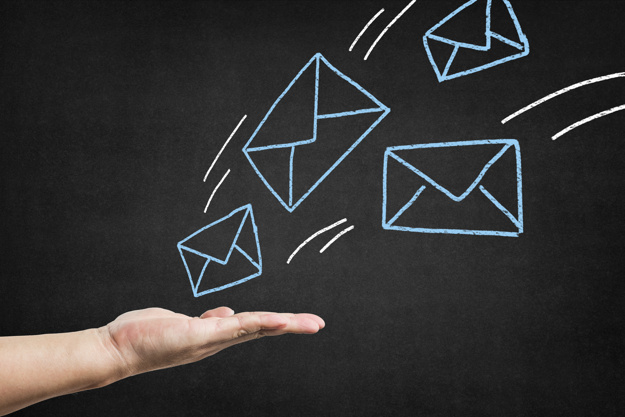September 2018
15 Tips for Polishing Your E-mail Etiquette
Do you have bad netiquette? In other words, are you horrifying colleagues with your terrible e-mail manners? Get it together with these etiquette tips from the specialists. In the age of the Internet, you might find yourself clicking "reply," composing up a quick response, and hitting "send" without giving so much as a thought about what you've just composed. But experts agree that your e-mail conduct has the potential to undermine your reputation both personally and professionally.
1. Only discuss public matters.
We've all heard the tales about a "private" email that wound up being passed around to the whole organization, and now and again, everywhere throughout the Internet. A standout amongst the most vital interesting points with regards to email behavior is whether the issue you're examining is an open one, or something that ought to be discussed away from plain view. Inquire as to whether the subject being talked about is something you'd compose on organization letterhead or post on an announcement board for all to see before clicking "send."
2. Briefly introduce yourself.
Try not to expect the individual getting your email knows your identity, or met you. On the off chance that you are dubious whether the beneficiary perceives your email address or name, incorporate a basic indication of your identity in connection to the individual you are contacting; a formal and broad account of yourself isn't vital.
3. Don't "e-mail angry."
E-mailing with awful news, terminating a customer or merchant, communicating outrage, decrying somebody, deriding other individuals in messages (especially in case you're saying something not as much as kind in regards to your manager) are altogether major no-no's. Since email can appear to be so casual, numerous individuals fall into this trap. Keep in mind that email correspondence keeps going forever.
4. Use exclamation points sparingly.
What should be the number of exclamation points in a business e-mail? One. Otherwise, you chance looking immature and amateurish.
5. Be careful with confidential information.
Abstain from examining secret data in messages, for example, somebody's expense data or the particulars of an exceptionally delicate business bargain. Should the email get into the wrong individual's hands, you could confront genuine - even legitimate - repercussions.
6.Respond in a timely fashion.
Unless you work in some type of emergency capacity, it's not necessary to be accessible the instant an e-mail arrives. Depending on the nature of the e-mail and the sender, responding within 24 to 48 hours is Ok.
7. Refrain from sending one-liners.
"Thank you," and "Oh, OK" do not help the conversation in any way. Don't hesitate to put "No Reply Necessary" at the highest point of the email when you don't envision a reaction.
8. Avoid using shortcuts to actual words, emoticons, jargon, or slang.
Words from grown, business people using shortcuts such as "4 u" (instead of "for you"), "Gr8" (for great) in business-related email isn't good. In the event that you wouldn't put a smiley face or emoji on your business correspondence, you shouldn't place it in an email message. Any of the above can possibly influence you to look not as much as expert.
9. Keep it clean.
Nothing bothers recipients more than when people reply and leave the messages messy, for example, an e-mail chain that includes excessive carets (>>>), or pages and pages of e-mail addresses that weren't protected using Bcc. You can dispose of carets by choosing the content, Ctrl+F to utilize the Find and Replace order to discover a caret and replace all of them with nothing. You can get rid of all the e-mail addresses just by deleting. Tidy it up, then send it.
10. Be clear in your subject line.
With inboxes being stopped up by many messages multi day, it's vital that your title comes to the heart of the matter. It ought to be sensibly straightforward and engaging of what you have expounded on. Expect that any email with a charming, ambiguous, or cloud subject will get destroyed. Additionally, confirmation your title as deliberately as you would verification whatever is left of the email.
11. Don't get mistaken for Spam.
Stay away from titles that are in all caps, all lower case, and those that incorporate URLs and exclamation points - which tend to look like Spam to the recipient.
12. Your subject line must match the message.
Never open an old email, hit Reply, and communicate something specific that has nothing to do with the past one. Do not hesitate to change the subject as soon as the thread or content of the e-mail chain changes.
13. Provide a warning when sending large attachments.
Sending unannounced large attachments can obstruct the beneficiary's inbox and cause other important e-mails to bounce. If you are sending something that is over 2MB or so, senders should ask, 'Would you mind if I sent you an attachment? When would be the best time for you?'
14. No more than two attachments, and provide a logical name.
Unless it's been specially requested, stay away from sending a message with more than two attachments.
15. Send or mark CC to others only on a need to know basis.
Before you click Reply All or put names on the Cc or Bcc lines, ask yourself if all the recipients need the information in your message. Take time to send your messages to the right people.
Also read: Scope of Social Media Marketing: 6 Trends to Watch Out for in 2018
More Career Oriented Tips, Article, Resource
Share This:
To Know About MBA Colleges in Mumbai Visit VPM's Center of Career and Skill Development Thane Website
For More Information About Startup Courses in Mumbai Contact us at (+91) 2536 4492 OR Email us at - vnbrims@vpmthane.org


